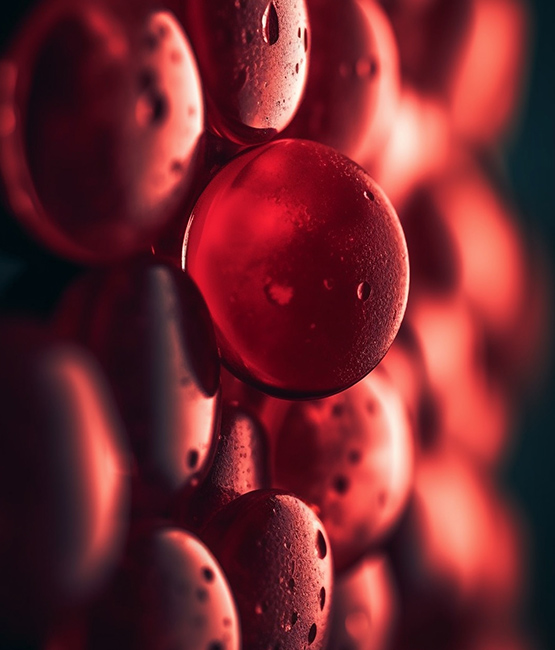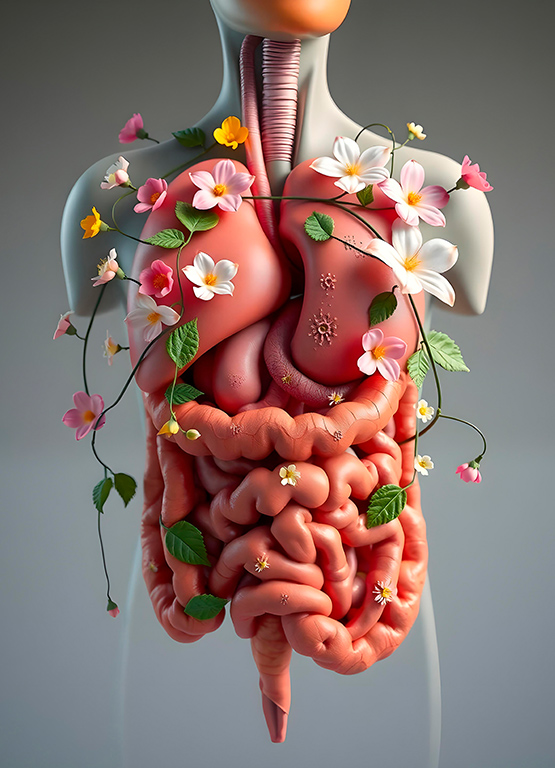XANTHOHUMOL - THE MIRACLE MOLECULE
FROM ANTI-INFLAMMATORY TO ANTICANCER AND ANTI-NEURODEGRADATION PROPERTIES
See other articlesRESEARCH ON XANTHOHUMOL

Inflammation is a natural process that helps our bodies fight infections and injuries, but when it persists for too long, it becomes a problem. Chronic inflammation is the root of many diseases, from heart disease to diabetes to depression.
Action of xanthohumol
The effects of xanthohumol are impressive, as it has the ability to effectively suppress inflammatory processes in the body. Laboratory and human studies have shown that even small doses of this substance can inhibit the activity of key inflammation regulators, such as the NF-κB pathway and the NLRP3 inflammasome [1], leading to a reduction in the production of proinflammatory cytokines and an enhancement of the cells' natural antioxidant mechanisms [2]. As a result, xanthohumol supports the body in reducing chronic inflammation, which underlies many diseases, including atherosclerosis and type 2 diabetes.
Reduces inflammation
One example is osteoarthritis, where xanthohumol inhibited cartilage degradation in laboratory studies. Besides inhibiting the production of inflammatory cytokines, xanthohumol also limits the activation and transfer of factor C/EBPβ to the cell nucleus, which is responsible for turning on genes associated with cartilage degradation. Furthermore, it increases the production of type II collagen and aggrecan, which are crucial for cartilage health, and their absence leads to its destruction [3].
ACTION OF XANTHOUMOL
GUARDIAN OF THE GLYCOCALIX – THE PROTECTIVE SHIELD OF CELLS
HOW DOES XANTHOUMOL HELPS PROTECT THE GLYCOCALIX?
The mechanism of glycocalyx degradation can be compared to the action of "molecular scissors" that cut through its sugar-protein chains. Important enzymes involved in this process include:
Xanthohumol acts as a "molecular brake" on these enzymes. It reduces their activity and the production of their genes. Furthermore, xanthohumol indirectly stabilizes the structure of the glycocalyx by limiting the expression and action of degradative enzymes, which helps it maintain its shape and stability. As a result, xanthohumol not only stops its destruction but also supports its integrity [6], [7].
CARDIOVASCULAR PROBLEMS
ANTIOXIDANT SHIELD
TREATMENT OF COMPLICATIONS
XANTHOUMOL'S CANCER FIGHTING POTENTIAL
Cancer is a leading cause of death worldwide. Cancer development and progression is a complex process that involves various genetic and environmental factors. Studies have shown that xanthohumol exhibits a broad spectrum of anticancer effects through multi-target molecular mechanisms. These include:
Xanthohumol activates key apoptotic pathways by:
Moreover, xanthohumol acts selectively against cancer cells, showing greater toxicity towards them than towards healthy cells [30].
EXAMPLES OF CANCER CONDITIONS FOR WHICH XANTHOUMOL HAS BEEN USED:
EFFECTIVENESS OF USE WITH CHEMOTHERAPY

Mechanism of supporting chemotherapy at the molecular level
What the models show
SUPPORT IN MEDICATION THERAPIES
Xanthohumol may act synergistically or supportively with selected non-chemotherapeutic drugs, although research to date has focused primarily on specific substances and specific pharmacological effects. Xanthohumol has been shown to support the activity of some nonsteroidal and antitubercular drugs and improve the safety profile of the therapy through its anti-inflammatory and antioxidant properties, without causing significant adverse interactions with commonly used medications.
In summary, xanthohumol is considered a safe aid in the treatment of many diseases, including infectious, cardiac, and metabolic. It helps improve the effectiveness of medications and protects the body from some of the side effects of therapy, which can help improve patients' quality of life during treatment.
SUPPORT IN THE TREATMENT OF EPILEPSY
ADDITIONAL BENEFITS FOR YOUR BRAIN
REBUILDING AND IMPROVING THE DIGESTIVE SYSTEM
Our intestines are not only the site of food digestion but also a veritable "second brain" that influences our health, mood, and mindset. The intestines are home to trillions of bacteria that make up the gut microbiota, which plays a crucial role in maintaining the health of the entire body. Xanthohumol acts as a good host for these beneficial microorganisms, demonstrating significant therapeutic potential in restoring and improving the digestive system, especially the intestines. Research indicates its multifaceted mechanisms of action [82], [83], [84].
CLINICAL TRIALS IN CROOHN'S DISEASE
Clinical trials are currently underway in which xanthohumol is administered to patients with active Crohn's disease. The XMaS study involves up to 32 patients receiving 24 mg of xanthohumol daily for 8 weeks. Safety biomarkers, inflammatory markers, platelet function, disease activity (CDAI), fecal microbiota composition, and xanthohumol metabolites are being monitored [88].
ACTION IN COLONITIS
In a mouse model of DSS-induced colitis, xanthohumol significantly ameliorated the disease. It protected the intestinal epithelium from damage, reduced the production of inflammatory cytokines and oxidative stress, and blocked the action of enzymes and factors involved in inflammation, such as cyclooxygenase-2 and the NF-κB pathway [89].
IMPACT ON BONE HEALTH IN BOWEL DISEASES
GASTROPROTECTIVE ACTION
SAFETY OF USING XANTHOUMOL
RESEARCH IS STILL IN PROGRESS
NOTES



